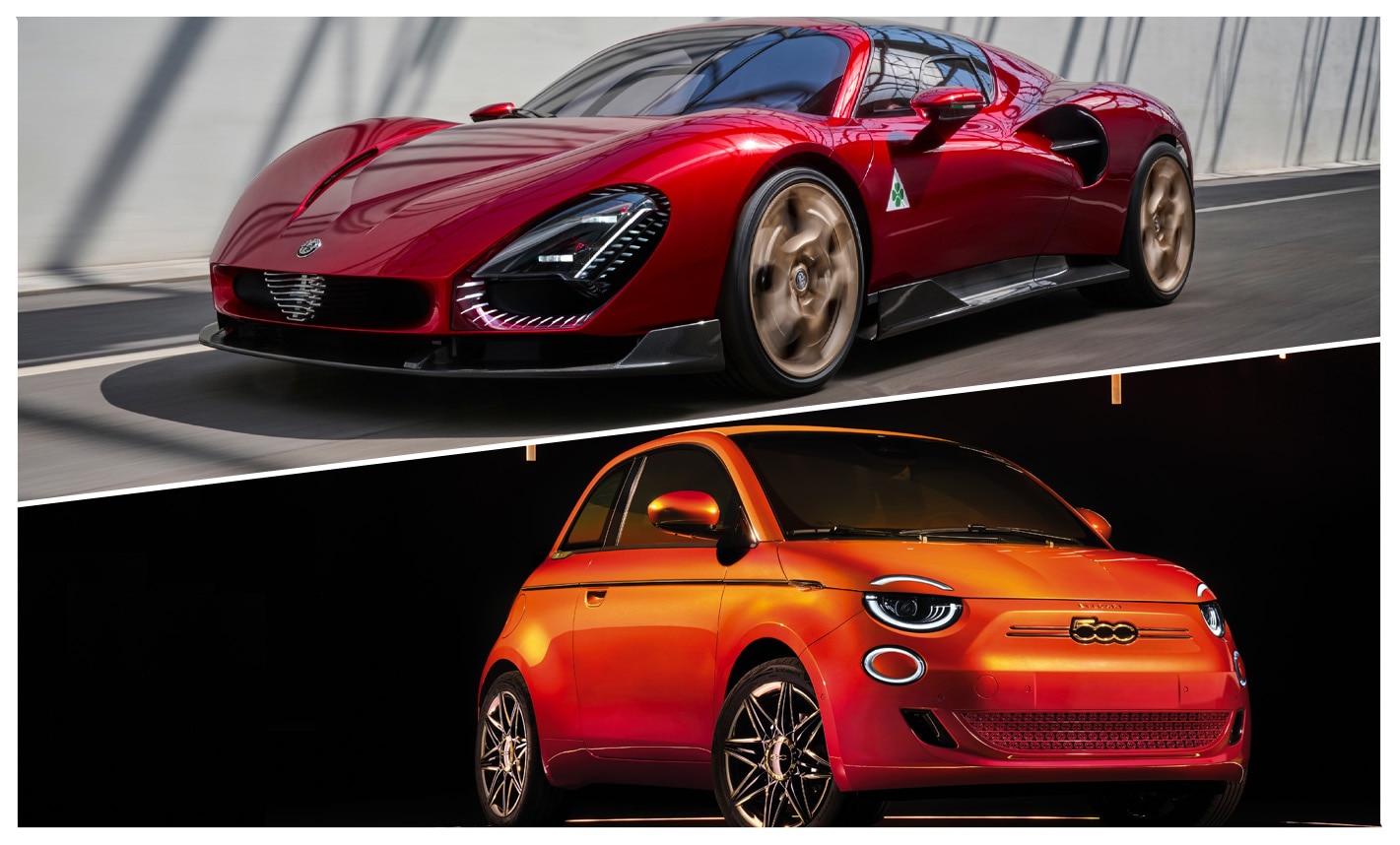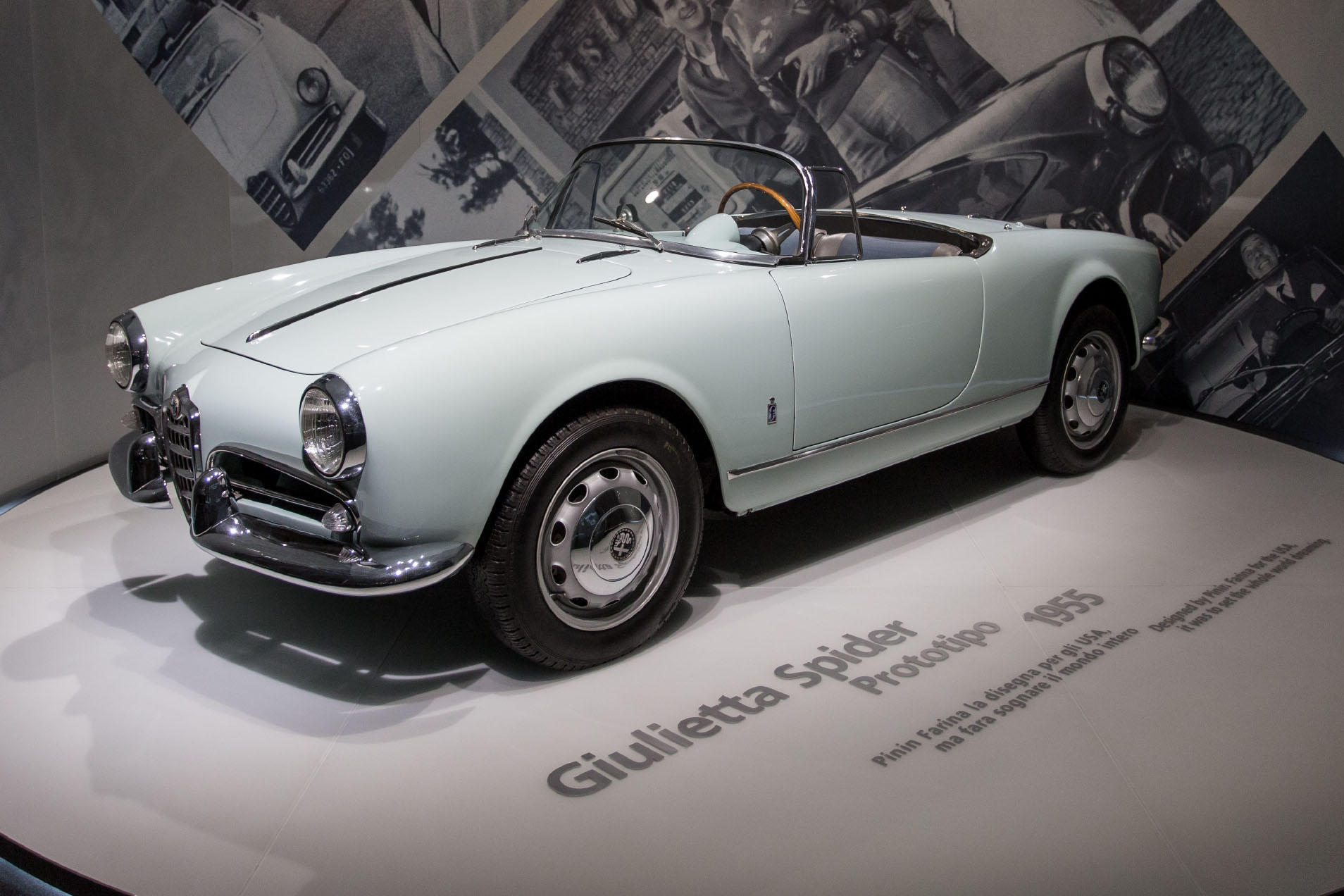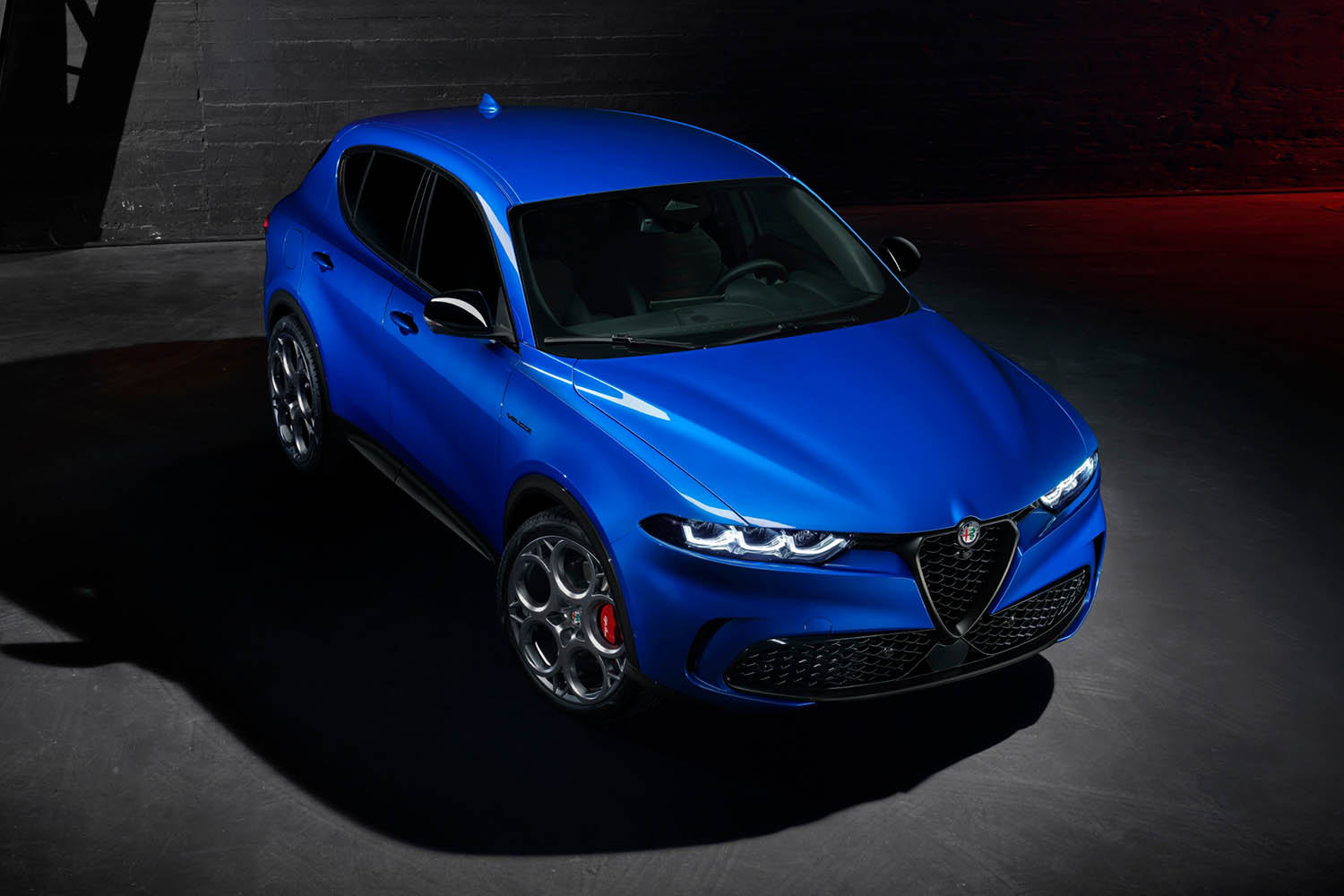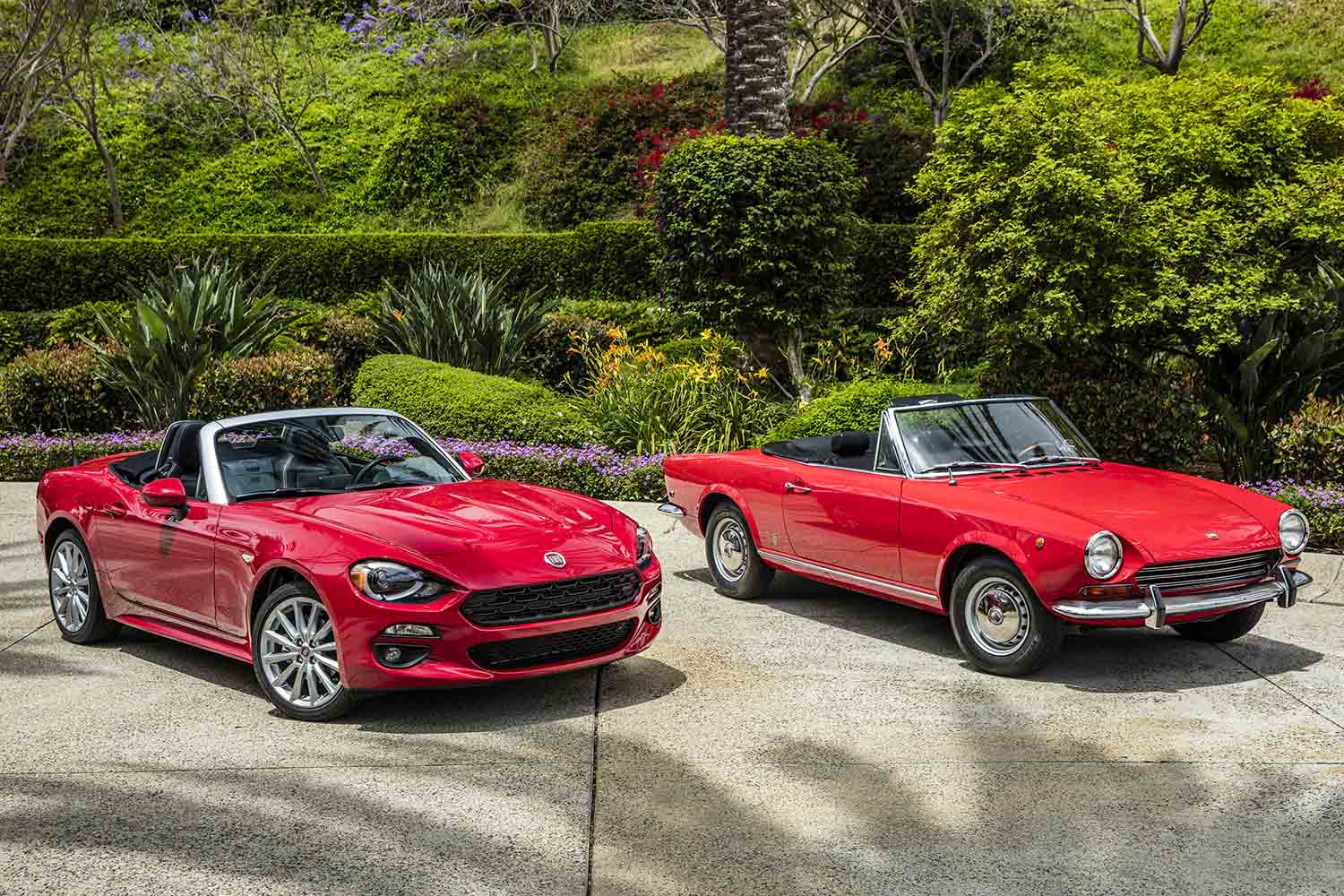Alfa Romeo and Fiat's Uphill Battles in the United States
Two of Italy's largest automakers are giving the U.S. market a second chance.
 Alfa Romeo and Fiat
Alfa Romeo and Fiat
Storied Italian marques Alfa Romeo and Fiat returned to the United States in the 2010s after a decades-long hiatus. At that point, both brands essentially started from scratch in a highly competitive market, while other European rivals that stuck it out thrived.
Now part of the Stellantis family, the merger of Fiat Chrysler Automobiles (FCA) and France's PSA Group, some industry observers believe that while Alfa Romeo has what it takes to establish a secure foothold here, Fiat stands on shakier ground.
 Alfa Romeo
Alfa Romeo
Alfa Romeo Has Struggled to Expand Beyond Sports Cars
Founded in Milan, Italy, in 1910, Alfa Romeo focused on performance early on, notably winning Sicily's grueling Targa Florio race in 1923, 1931, 1932, and 1933. The automaker channeled the lessons learned while racing into street-legal models and entered the U.S. market in the early 1960s with the Giulietta Spider. It secured a spot in popular culture when the Alfa Romeo Duetto roadster made a prominent appearance in 1967's Oscar-winning movie "The Graduate."
Alfa Romeo stayed true to its sporting roots in the 1970s and the 1980s. However, the rise of competitors — such as Germany's BMW — and an expanding list of reliability problems hampered the company's growth. While the Duetto's successor, the Spider, remained popular, some of the cars Alfa Romeo sold in the U.S. went nearly unnoticed. (The Milano sports sedan was retired here after three model years.) Financial problems complicated the situation. Alfa Romeo posted significant losses in 1984 and 1985, and Fiat bought Alfa from the Italian government in 1986.
The high cost of complying with looming U.S. regulations, compounded by years of losses, convinced Alfa's executives to throw in the towel, closing its U.S. division in 1995. The brand spent the next few years focusing on Europe, its core market, which still faced mounting challenges.
Rumors outlining Alfa Romeo's return to the U.S. market hovered around the automotive industry in the early 2000s, but the move didn't materialize until the limited-edition 8C Competizione debuted in 2007. Its tiny production run made it something of a tease for stateside Alfa fans.
Under the stewardship of FCA — formed in 2014 through the merger of Chrysler Group and Fiat — the 4C Spider mid-engine sports car was released for 2015, marking Alfa Romeo's second U.S. comeback. Low, small, and light, the two-seater was positioned as a halo model that paved the way for more volume-oriented cars, such as the current Giulia compact sedan and Stelvio compact SUV. Both models received updates for 2023 and remain available.
 Alfa Romeo
Alfa Romeo
Alfa Romeo Is Betting SUVs and EVs Will Take It Mainstream
In 2023, Alfa Romeo took a big step toward the mainstream by releasing the Tonale, a subcompact SUV aimed at the more established Audi Q3 and BMW X1. The Tonale — which shares its platform with the Dodge Hornet — is smaller, more modern inside, and more volume-oriented than the Stelvio. Those are the key attributes the brand hopes will lure younger buyers into showrooms.
What's next depends on who you ask. Alfa Romeo plans to sell only EVs by 2027 but hasn't said much about them. The brand unveiled the limited-edition 33 Stradale supercar in August 2023, while electric successors to the Giulia and the Stelvio are reportedly due out during the second half of the 2020s. Vague, unofficial reports suggest a flagship SUV positioned against BMW's electric iX will arrive in 2028.
Alfa Romeo's goal is to be a strong BMW competitor by 2030.
 Fiat
Fiat
The Mid-1970s Were Fiat's Most Successful Years in the U.S.
Founded in Turin, Italy, in 1899, Fiat — Fabbrica Italiana Automobili Torino — quickly dominated the Italian market by offering a broad range of models, including economy cars, luxury sedans, and commercial vehicles. It held 73.2% of the Italian market in 1967. Inexpensive entry-level cars such as the Fiat 500 deserve credit for propelling Fiat to stardom in its home country, but these models fared poorly on our shores due to their minuscule size and underpowered engines.
In the U.S., issues with rust and reliability dented Fiat's image, and new competition loomed. Sales of Japanese imports such as Honda and Toyota increased during the 1970s at the expense of Fiat's sales and image, and its share of the U.S. market took a nosedive. In 1975, the Italian brand sold 110,511 cars — its best year. That figure dropped to 14,113 by 1981. Fiat left the U.S. market after the 1982 model year, though the Spider 2000 and the X1/9 sports cars remained available, with Italy's Pininfarina selling the former and Bertone selling the latter.
Fiat steered clear of the U.S. market until it returned as a part of FCA with the retro-inspired 500 city car for the 2012 model year. It later launched the 500L tall hatchback, 500X small SUV, and the 124 Spider (on the same platform as the Mazda Miata) to increase U.S. sales.
 Fiat
Fiat
Fiat's Future on Our Shores Remains Cloudy
Fiat has gradually pared back its range in the U.S. over the past few years. The 500 retired after the 2019 model year, though it remains available in Europe, while the 500L and the 124 Spider left after the 2020 model year.
As of 2023, the only U.S. model in its catalog is the 500X. The subcompact SUV is closely related to the Jeep Renegade under the sheetmetal, and the two SUVs roll off the same assembly line in Italy. In the second quarter of 2023, Fiat sold merely 143 units of the 500X — down 42% compared to the second quarter of 2022 — compared to the 5,020 units of the Jeep Renegade — down 31% from the second quarter of 2022.
Unsurprisingly, the nine-year-old 500X has nearly reached the end of its life cycle. Fiat confirmed it will not replace the model in the U.S., meaning it will soon leave one of the biggest market segments. The brand will instead shift its focus to selling the electric 500 launched in Europe in 2020. The 500e stretches about 143 inches long and offers either 118 or 205 miles of driving range, depending on the battery pack it's equipped with. The hatchback will debut here in 2024, but its success is far from assured. With a price starting north of $30,000 at current conversion rates, it’s also not a budget option. Where that leaves Fiat beyond a single model remains to be seen.
Written by humans.
Edited by humans.
 Ronan Glon
Ronan GlonRonan Glon is an American journalist and automotive historian based in France. He enjoys working on old cars and spending time outdoors seeking out his next project car.
Related articles
View more related articles